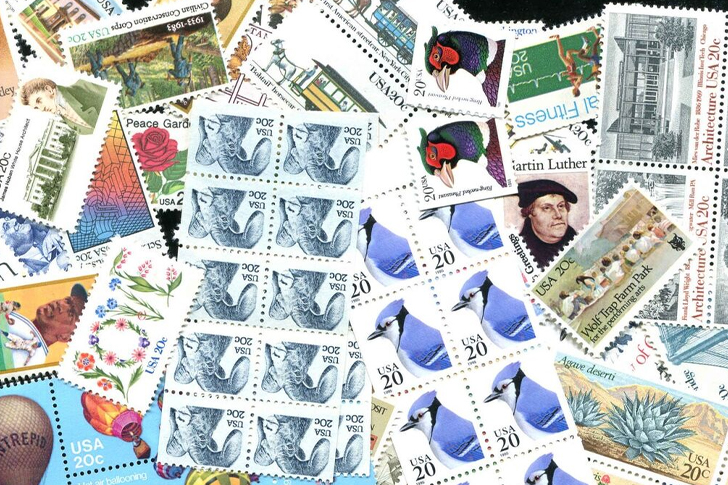Affordable Stamp Purchasing Alternatives in the Digital Age
In an era dominated by digital communication, the humble postage stamp has retained its charm and utility, bridging distances by helping mail travel around the globe. Despite the prevalence of digital communication tools, sending letters and parcels remains indispensable for many individuals and businesses. However, the cost of postage can accumulate, especially for frequent users. This article explores practical and affordable alternatives for purchasing stamps in the digital age, offering a comprehensive guide to saving money while engaging in traditional postal activities.

Understanding Stamp Costs
Postage stamps, though small and seemingly inexpensive, can represent a significant expense. In the United States, the cost of a standard First-Class stamp is $0.63 as of January 2023. While this cost might seem nominal, it can add up, particularly for businesses that rely heavily on postal services for shipping products or marketing materials. For instance, sending 1000 letters would currently cost $630. Hence, exploring more cost-effective ways to purchase stamps can yield considerable savings.
Online Postal Services: A Digital Solution
One of the most significant developments in stamp purchasing has been the emergence of online postal services. Websites like Stamps.com, USPS.com, and others offer the ability to buy stamps online directly from your computer or mobile device. These platforms often provide discounts for bulk purchases or subscriptions. For example, Stamps.com offers a service where users can buy and print their postage, eliminating the need for traditional stamps. This can be particularly cost-effective for businesses, as they can save up to 10% on postage costs using such services.
Discounted Stamp Vendors and Wholesale Options
Another alternative for purchasing stamps affordably is through discounted stamp vendors or wholesale purchases. These are particularly useful for enterprises that send out large volumes of mail. Companies like BJ’s and Costco sell booklets or rolls of stamps at discounted prices, typically 1-5% the face value. There are also online dealers that specialize in selling unused stamps for less than their postal value, though buyers should ensure these dealers are reputable to avoid counterfeit stamps.
Subscription Services and Pre-Paid Models
Subscription services represent a modern approach to stamp acquisition. These services, offered by both national postal authorities and private companies, allow customers to pay a monthly fee, in exchange for which they receive a determined number of stamps or an equivalent amount of postage. This model not only simplifies budgeting for postage costs but also ensures regular delivery of stamps, thus avoiding last-minute purchases at potentially higher prices.
Utilizing Postage Meters
Postage meters are a staple in many offices across the world. These devices allow businesses to print their own postage directly onto envelopes or labels. According to Pitney Bowes, a leading manufacturer of postage meters, businesses can save up to 20% on postage expenses by using a meter. The initial setup and rental costs for a postage meter can be a barrier for smaller businesses, but for medium to large companies, the long-term savings are substantial.
Comparing Prices and Modern Tools
For individuals and businesses looking to optimize their stamp purchasing strategy, comparing prices and using modern tools are essential practices. Websites like ComparePostage.com offer price comparisons and reviews on various postage buying options, from traditional stamps to digital postage solutions. Additionally, mobile apps for comparison shopping can alert users to discounts and specials on postage, making it easier to find deals in real-time.
The Role of Digital Stamps
The digital stamp is a relatively new concept where postage is paid for online, and a digital stamp or code is printed directly onto the envelope or label. This method has been gradually introduced in several countries and offers a highly flexible and potentially lower-cost alternative to traditional stamps. With digital stamps, users typically pay for exactly the postage they need, potentially saving money and reducing waste associated with unused or partially used stamp booklets.
Conclusions and Recommendations
In conclusion, while traditional postage stamps are a staple of the mailing and shipping industry, numerous alternatives now exist which can save money and add convenience for both personal and business users. By leveraging online services, wholesale options, postage meters, and even embracing digital stamps, savvy consumers can significantly cut down on their mailing expenses. As we advance further into the digital age, the intersection of technology and traditional mailing services continues to evolve, offering smarter and more budget-friendly solutions for managing postal needs.
Whether for personal correspondence, business transactions, or bulk mailing, exploring these alternatives and adopting a strategic approach toward purchasing stamps can lead to significant savings and more efficient postal operations. As with any expense, the key is to stay informed and seek out the best options tailored to specific needs and usage patterns.







Recent Comments